Olympic National Forest
- December 21, 2023
- 0 comment
Embraced by the untamed beauty of the Pacific Northwest’s Olympic Peninsula, the Olympic National Forest stands as an expansive tribute to the wonders of the natural world. Encompassing over 600,000 acres, this captivating wilderness unfolds a diverse panorama—from the lush temperate rainforests of the west to the rugged mountains and coastal beaches that define its borders. Serving as an integral companion to the neighboring Olympic National Park, the forest beckons explorers with its varied ecosystems, ancient woodlands, and winding trails.
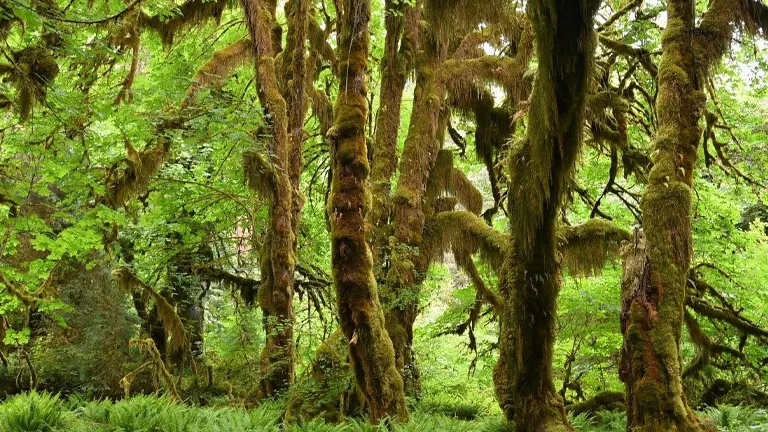
Rooted in a storied history reaching back to the conservation movements of the late 19th century, the Olympic National Forest not only cradles some of the region’s most pristine natural treasures but also engages in an ongoing discourse regarding the balance between preservation and the responsible utilization of its abundant resources. Step into this green haven, where each tree has a tale to tell, and the air resonates with the spirit of a living, dynamic sanctuary.
Characterizing Features of the Olympic National Forest
- Diverse Landscapes: Encompasses a wide range of landscapes, including temperate rainforests, saltwater fjords, and mountainous terrains.
- Extensive Coverage: Spans over 600,000 acres, surrounding much of Olympic National Park and the Olympic Mountain range.
- Ancient Old-Growth Forests: Hosts a significant extent of old-growth forests, contributing to the forest’s ecological richness.
- Recreational Trail Network: Boasts an extensive network of trails, totaling 270 miles, providing opportunities for hiking and exploration.
- Wilderness Areas: Contains five designated Wilderness Areas, preserving the natural beauty and ecological integrity of specific regions.
- Proximity to Olympic National Park: Acts as an essential counterpart to Olympic National Park, collectively offering a diverse range of ecosystems and recreational activities.
- Historic Significance: Traces its roots back to the late 19th century when it was initially established as the Olympic Forest Reserve in 1897.
- Ranger Districts: Administered through two ranger districts, namely the Pacific Ranger District on the west side and the Hood Canal Ranger District on the east side.
- Wildlife Habitat: Provides essential habitat for diverse wildlife, contributing to the region’s biodiversity.
- Connection to Outdoor Recreation: Offers recreational opportunities beyond hiking, including beach backpacking, winter sports at Hurricane Ridge, and scenic viewpoints.
- Proximity to Coastal Areas: Features a coastal portion with a rugged, sandy beach, adding a unique coastal dimension to the forest’s diverse environments.
- Gateway to the Olympic Mountains: Serves as a gateway to the Olympic Mountains, where glacial features and high-altitude landscapes dominate the central region.
- Community Opposition and Support: Witnessed community opposition, particularly regarding logging activities, as well as support from conservation organizations advocating for wilderness preservation.
- Forest Headquarters: Headquartered in Olympia, with ranger district offices strategically located in Forks, Quinault, and Quilcene.
- Economic and Ecological Interplay: Embodies the ongoing challenge of balancing economic interests, such as logging, with ecological preservation efforts.
History
The history of the Olympic National Forest is closely tied to the late 19th-century conservation movement, reflecting ongoing efforts to balance human activities and environmental preservation. Initially named the Olympic Forest Reserve in 1897 and later renamed the Olympic National Forest in 1907, these changes signified an important recognition of the region’s ecological importance. As the 20th century unfolded, the forest played a key role in the broader conservation narrative, witnessing the establishment of Mount Olympus National Monument in 1909—a precursor to the designation of Olympic National Park in 1938. Facing challenges from extractive industries, especially timber harvesting, in the late 19th and early 20th centuries, the forest saw a rise in public opposition to logging during the 1920s.
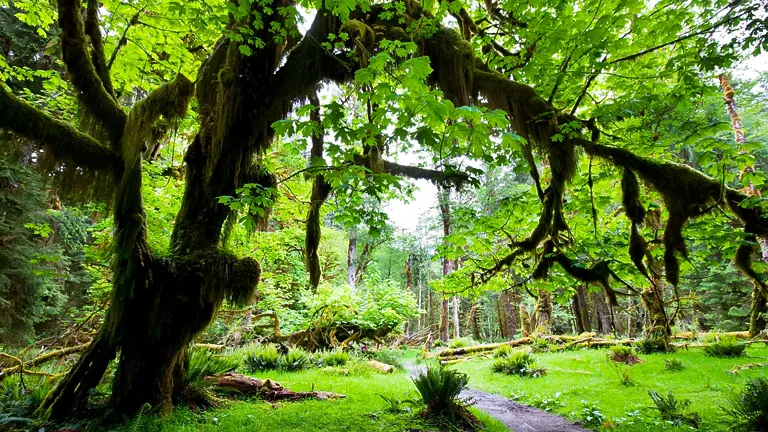
This period marked a shift towards increased interest in outdoor recreation, facilitated by the growing use of automobiles. The formal creation of Olympic National Park in 1938 was a significant milestone in ongoing efforts to preserve the unique ecosystems of the Olympic Peninsula. Today, the forest remains a focal point for conservation discussions, with ongoing debates about wilderness designations and resource use, highlighting the delicate balance between human activities and the need to protect the region’s ecological treasures.
Importance in Conservation and Recreation
The Olympic National Forest holds paramount importance in the realm of conservation and recreation, standing as a critical piece of the ecological puzzle on the Olympic Peninsula. Its vast expanse, covering over 600,000 acres, serves as a haven for diverse ecosystems, including ancient old-growth forests, temperate rainforests, and the majestic Olympic Mountains. Conservation efforts have been central to its history, marked by the establishment of the Olympic Forest Reserve in 1897 and subsequent designation as the Olympic National Forest in 1907.
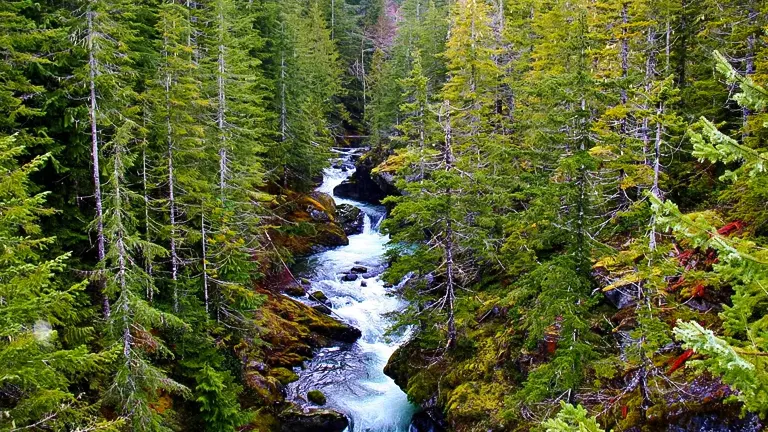
As a companion to Olympic National Park, the forest contributes significantly to the preservation of the region’s biodiversity. Beyond its ecological significance, the forest offers extensive recreational opportunities, boasting an intricate network of trails totaling 270 miles and providing access to scenic viewpoints like Hurricane Ridge. From hiking and backpacking to winter sports, the Olympic National Forest caters to the diverse interests of outdoor enthusiasts. Its role as a buffer surrounding Olympic National Park and its continued significance in ongoing conservation discussions underscore its dual importance in sustaining both the natural wonders of the peninsula and the enjoyment of those seeking solace in its untamed beauty.
Unique Location of Olympic National Forest
Located in the northwest corner of Washington State, the Olympic National Forest occupies a unique position on the Olympic Peninsula. Covering an extensive area of over 600,000 acres, the forest’s distinctiveness lies in its proximity to the Pacific coastline, creating a mix of environments from sandy beaches to rugged mountains. This unique geography makes the forest an important ecological transition zone, hosting temperate rainforests on its western side, including the Hoh Rainforest and Quinault Rainforest, and drier, more mountainous terrain to the east.

Being close to Olympic National Park, the forest is part of a continuous stretch of protected lands that showcase the diverse landscapes of the Pacific Northwest. This special location not only offers various recreational activities like hiking and winter sports at Hurricane Ridge but also underscores the forest’s role in broader regional conservation efforts. The interplay of coastal and mountainous influences makes the Olympic National Forest a distinct and valuable ecological asset.
Diverse Vegetation and Unique Plant Species:
- Sitka Spruce (Picea sitchensis): Found along the Pacific coastline, Sitka spruce is well-suited to the coastal environment, with its dense wood providing stability to the shoreline against coastal erosion and storms.
- Western Hemlock (Tsuga heterophylla): Dominating the temperate rainforests, Western Hemlock contributes to the forest’s intricate canopy, offering vital habitat for various wildlife species and maintaining the ecosystem’s biodiversity.
- Coast Douglas-fir (Pseudotsuga menziesii menziesii): Common in both coastal and inland areas, the Coast Douglas-fir is a foundational species, providing habitat, stabilizing soil, and supporting diverse plant and animal life.
- Western Redcedar (Thuja plicata): Thriving in rainforests, the Western Redcedar is culturally significant to indigenous communities, providing essential materials for traditional purposes, including construction and crafting.
- Mosses and Lichens: Adorning coniferous trees, mosses and lichens contribute to the forest’s micro-ecosystem, enhancing moisture retention, providing habitat for insects, and indicating air quality.
- Pacific Silver Fir (Abies amabilis): Thriving in subalpine regions, the Pacific Silver Fir influences soil conditions and supports unique plant communities, playing a crucial role in maintaining ecological balance.
- Olympic Mountain Buttercup (Ranunculus austro-oreganus): Endemic to the Olympic Mountains, this buttercup contributes to the region’s floral diversity, adapting to the challenging alpine conditions and providing food for pollinators.
- Vanilla Leaf (Achlys triphylla): Flourishing in rainforest understories, Vanilla Leaf contributes to the forest’s biodiversity and has traditional medicinal uses among indigenous communities.
- Beargrass (Xerophyllum tenax): Thriving in subalpine meadows, Beargrass adds visual appeal and provides forage for wildlife, playing a role in the delicate balance of the ecosystem.
- Twinflower (Linnaea borealis): Fragrant groundcover in coniferous and deciduous forests, Twinflower enhances the forest floor’s aesthetic, provides cover for small mammals, and offers nectar for pollinators.
- Queets Bluejoint (Calamagrostis canadensis langsdorffii): A native grass found in wet meadows, Queets Bluejoint stabilizes soil, prevents erosion, and contributes to the health of wetland ecosystems.
- Fringecup (Tellima grandiflora): Thriving in forest understories, Fringecup contributes to the diversity of understory vegetation, providing shelter for small wildlife and attracting pollinators.
- Bunchberry (Cornus unalaschkensis): A low-growing groundcover with clusters of flowers, Bunchberry adds to the forest’s floral diversity, attracting insects and serving as a food source for various wildlife.
- Lupine (Lupinus): Vibrant lupine spikes contribute to meadows’ beauty, support nitrogen fixation in the soil, and provide sustenance for pollinators.
- Columbian Monkshood (Aconitum columbianum): Thriving in subalpine and mountainous regions, Columbian Monkshood adds color to the landscape, and its toxic properties may serve as a deterrent to herbivores.
- Salal (Gaultheria shallon): A prevalent understory shrub, Salal provides habitat for small mammals and birds, offers food for wildlife, and has cultural significance in indigenous practices.
- Bog Laurel (Kalmia microphylla): Flourishing in boggy areas, Bog Laurel contributes to wetland ecosystems, providing habitat and supporting biodiversity in these specialized environments.
- Bracken Fern (Pteridium aquilinum): Common in open areas, Bracken Fern adds to fern diversity, prevents soil erosion, and contributes to the forest’s overall ecosystem resilience.
- Avalanche Lily (Erythronium montanum): Thriving in subalpine meadows, Avalanche Lilies contribute to the meadows’ vibrant bloom, provide food for pollinators, and play a role in nutrient cycling.
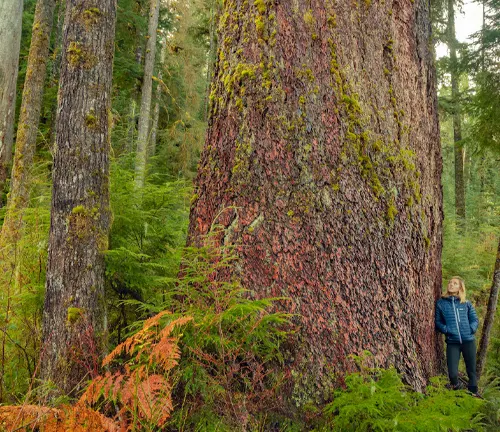

Fauna:
- Roosevelt Elk (Cervus canadensis roosevelti): These majestic elk, named after President Theodore Roosevelt, are native to the region and are crucial for maintaining the ecological balance through their grazing patterns. Their presence contributes to seed dispersal and influences vegetation dynamics, shaping the forest landscape.
- Black-tailed Deer (Odocoileus hemionus columbianus): Iconic black-tailed deer are an integral part of the forest ecosystem, influencing plant communities through their browsing activities. They serve as both prey and predator, interacting with various species and contributing to overall biodiversity.
- Mountain Goat (Oreamnos americanus): Thriving in the alpine and subalpine zones, mountain goats are specially adapted to the rugged terrain of Olympic National Forest. Their presence helps regulate plant populations in high-altitude areas and contributes to nutrient cycling.
- Bobcat (Lynx rufus): Bobcats, as versatile predators, play a crucial role in controlling small mammal populations, helping to maintain a balance between herbivores and vegetation. Their elusive nature makes them essential components of a healthy forest ecosystem.
- Red Fox (Vulpes vulpes): Adaptable red foxes are found in diverse habitats within the forest. They contribute to pest control by preying on small mammals and birds, helping to maintain the health of the ecosystem.
- Black Bear (Ursus americanus): Black bears are essential for seed dispersal, particularly for berries and nuts. Their foraging habits contribute to plant diversity, and they play a role in shaping forest structure through their interactions with vegetation.
- Cougar (Puma concolor): As apex predators, cougars help regulate herbivore populations, preventing overgrazing and promoting a healthy balance within the ecosystem. Their presence is indicative of a robust and functioning forest food web.
- Raccoon (Procyon lotor): Opportunistic raccoons are adaptable omnivores, contributing to nutrient cycling by consuming a variety of food sources. Their role in the forest involves controlling insect and small mammal populations.
- River Otter (Lontra canadensis): Inhabitants of rivers and freshwater ecosystems, river otters play a crucial role in maintaining aquatic biodiversity. Their presence indicates the health of freshwater habitats and the availability of prey species.
- Bald Eagle (Haliaeetus leucocephalus): Bald eagles are not only majestic symbols but also indicate the health of the forest’s aquatic ecosystems. Their presence along rivers suggests the availability of fish and a thriving ecosystem.
- Northern Spotted Owl (Strix occidentalis caurina): Inhabiting old-growth forests, the northern spotted owl serves as an indicator species for forest health. Their presence highlights the importance of preserving mature forest habitats for a balanced ecosystem.
- Pacific Fisher (Pekania pennanti): As carnivores, Pacific fishers contribute to controlling small mammal populations, helping to maintain a balanced ecosystem. Their presence is indicative of the overall health of the forest.
- Marbled Murrelet (Brachyramphus marmoratus): Nesting in old-growth trees, marbled murrelets are seabirds that venture inland to find suitable nesting sites. Their reliance on mature forests emphasizes the importance of preserving these habitats for avian diversity.
- Snowshoe Hare (Lepus americanus): Well-adapted to the forest floor, snowshoe hares are an important prey species for predators like lynx and bobcats. Their coat color changes seasonally, adapting to the snow-covered landscape.
- Pileated Woodpecker (Dryocopus pileatus): Inhabitants of mature forests, pileated woodpeckers contribute to ecosystem health by foraging for insects and creating cavities for nesting. Their presence indicates the vitality of old-growth habitats.
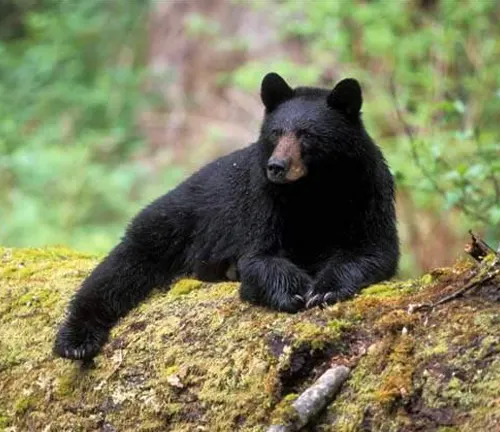
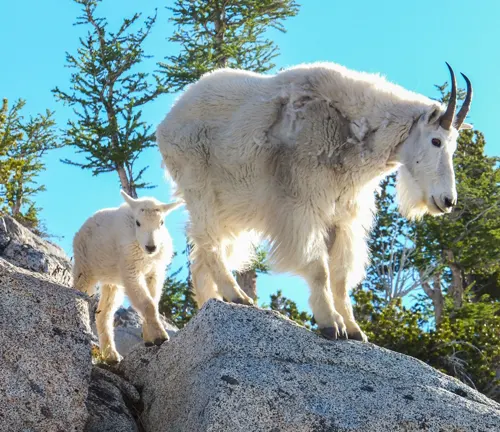
Importance as a Wildlife Corridor and Habitat for Threatened Species
The Olympic National Forest emerges as a critical sanctuary, embodying a dual role as both a pivotal wildlife corridor and a refuge for threatened species. Encompassing over 628,000 acres in the heart of Washington State, this expansive forest serves as a lifeline for biodiversity, facilitating the seamless movement of wildlife across diverse landscapes. Its significance as a wildlife corridor lies in connecting various habitats, enabling species to navigate and adapt to changing environmental conditions. Beyond its role as a thoroughfare, the Olympic National Forest provides essential shelter and sustenance for species facing endangerment. The old-growth forests, pristine rivers, and varied ecosystems within its boundaries offer a haven for threatened inhabitants like the Northern Spotted Owl, Pacific Fisher, Marbled Murrelet, and Coastal Cutthroat Trout. Preserving these habitats is not only crucial for the survival of these species but also underscores the forest’s broader importance in global biodiversity conservation. The delicate balance between human activities and the imperative to safeguard these ecosystems reinforces the Olympic National Forest’s irreplaceable role in preserving the intricate tapestry of life within its borders.
Activities in Olympic National Forest for Visitors
1. Hiking
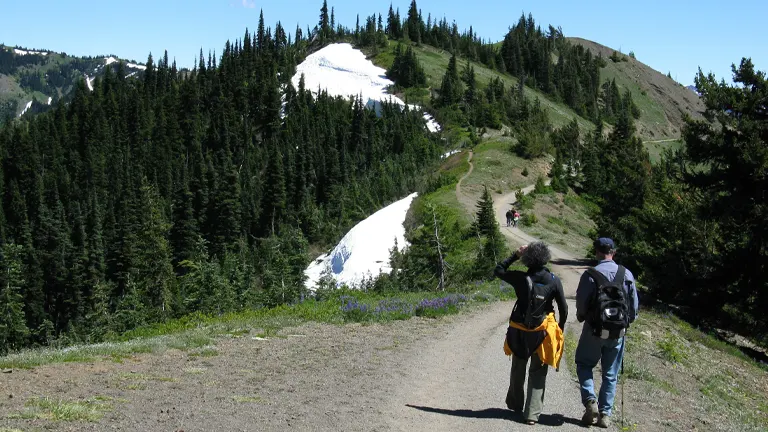
Olympic National Forest boasts an extensive network of trails, offering hikers diverse landscapes from dense rainforests to alpine meadows. Trails like the Hoh River Trail provide immersive experiences in the heart of temperate rainforests. Hiking allows visitors to explore the rich biodiversity, witness stunning scenery, and experience the forest’s unique ecosystems up close.
2. Wildlife Viewing

The forest is home to diverse wildlife, including elk, black bears, and various bird species. Popular spots like Hurricane Ridge offer opportunities for wildlife observation. Wildlife viewing enhances the visitor experience, providing a chance to appreciate the natural inhabitants of the forest and contribute to conservation awareness.
3. Backpacking
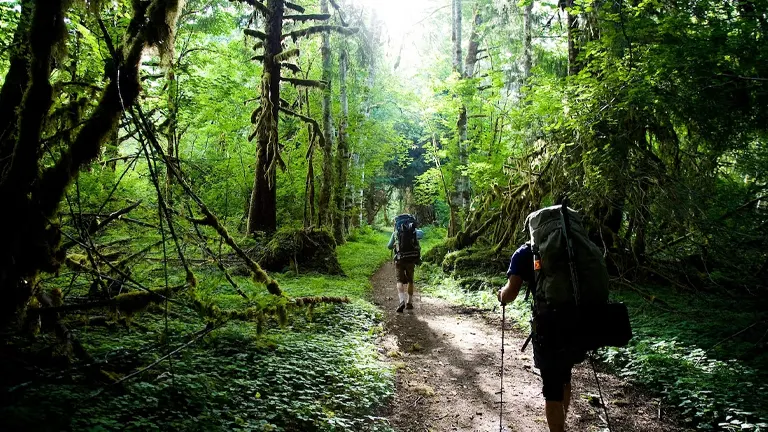
With vast wilderness areas like the Daniel J. Evans Wilderness, backpacking enthusiasts can embark on multi-day adventures, exploring remote and pristine landscapes. Backpacking allows for a deeper immersion into the forest, providing solitude and a sense of connection with nature.
4. Scenic Drives

Scenic routes like Hurricane Ridge Road offer breathtaking views of the Olympic Mountains and surrounding landscapes. The drive through diverse ecosystems provides a unique perspective. Scenic drives cater to a wide range of visitors, offering accessibility to the forest’s beauty and allowing for a leisurely appreciation of the scenery.
5. Winter Sports

Hurricane Ridge transforms into a winter wonderland, offering opportunities for skiing, snowboarding, and snowshoeing during the snowy months. Winter sports diversify the recreational offerings, attracting visitors year-round and showcasing the forest’s adaptability to different seasons.
6. Beachcombing

The coastal strip of Olympic National Forest features rugged beaches and driftwood deposits. Beachcombing along the Pacific coastline reveals unique marine treasures. Beachcombing provides a relaxing and family-friendly activity, allowing visitors to connect with the marine aspects of the forest and enjoy its diverse coastal environment.
7. Photography

The forest’s varied landscapes, from moss-draped rainforests to glaciated mountains, offer endless opportunities for photography. Iconic viewpoints like Hurricane Ridge provide stunning panoramas. Photography allows visitors to capture and share the beauty of the forest, fostering appreciation and serving as a visual storytelling tool.
8. Camping
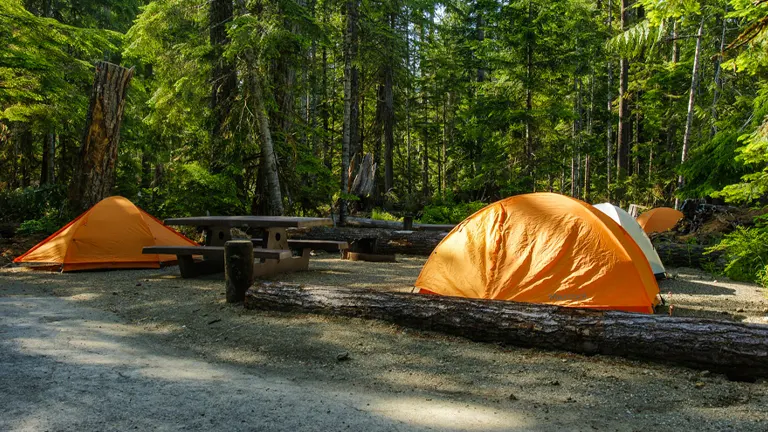
Campgrounds like Staircase and Heart O’ the Hills offer camping opportunities within the forest. Both developed and backcountry campsites cater to different preferences. Camping provides an immersive experience, allowing visitors to spend extended periods in the forest, connect with nature, and enjoy starlit nights.
9. Fishing
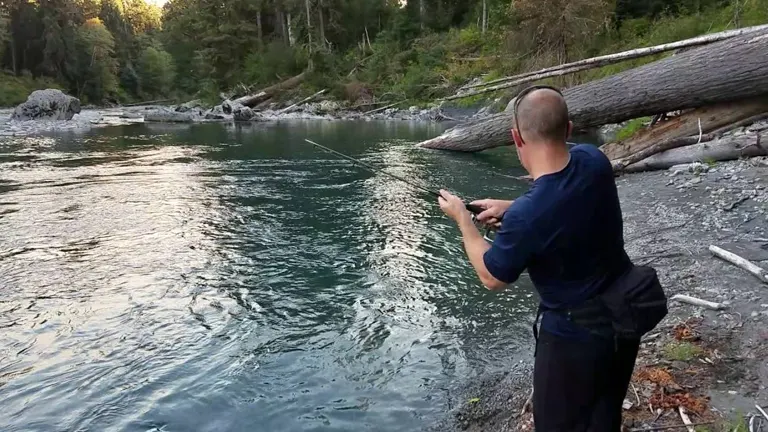
Olympic National Forest features freshwater streams and rivers, providing habitats for various fish species. Anglers can try their luck with salmon and trout. Fishing adds a recreational dimension, appealing to outdoor enthusiasts and contributing to sustainable management of aquatic ecosystems.
10. Educational Programs
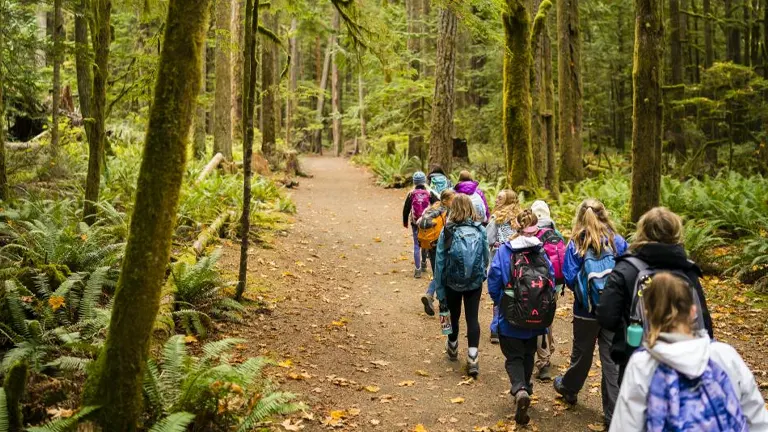
The forest offers educational programs, guided hikes, and ranger-led activities to enhance visitors’ understanding of the ecosystem, conservation efforts, and cultural history. Educational programs promote environmental awareness, fostering a deeper connection between visitors and the forest while contributing to conservation initiatives.
Conservation and Management
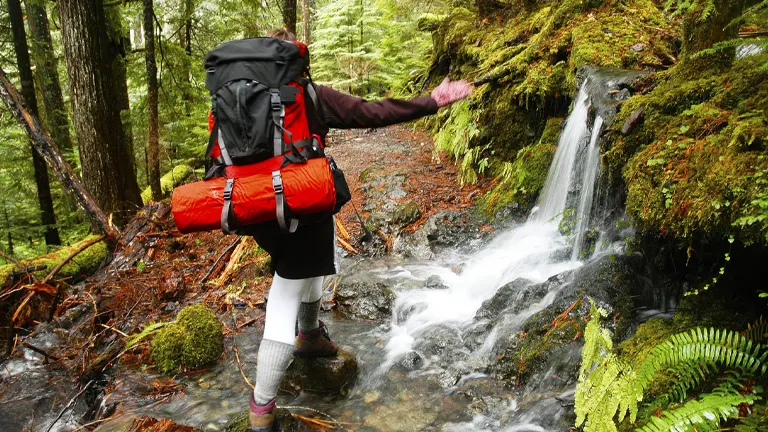
The conservation and management of Olympic National Forest represent a delicate balance between preserving its diverse ecosystems, fostering sustainable use, and ensuring the long-term health of this natural gem. Several key strategies and initiatives contribute to the stewardship of this vast forested expanse:
- Ecosystem Monitoring: Regular monitoring of ecosystems, including flora and fauna, helps assess the health of the forest. Scientific data guides conservation efforts and informs management decisions, ensuring a holistic understanding of the forest’s dynamics.
- Habitat Preservation: Designation of wilderness areas, such as the Daniel J. Evans Wilderness, emphasizes the commitment to preserving pristine habitats. These areas serve as sanctuaries for native species, promoting biodiversity and protecting critical ecosystems.
- Old-Growth Forest Protection: Preservation of old-growth forests is paramount for maintaining biodiversity and supporting species like the Northern Spotted Owl and Pacific Fisher. Strict regulations aim to safeguard these crucial habitats from logging and other disturbances.
- Wildlife Corridor Connectivity: Recognizing the importance of the forest as a wildlife corridor, management strategies focus on maintaining connectivity between different habitats. This ensures the free movement of species, supporting genetic diversity and overall ecosystem resilience.
- Public Education and Outreach: Educational programs and outreach initiatives aim to raise awareness about the significance of Olympic National Forest. By fostering an understanding of the delicate balance between human activities and conservation, these efforts encourage responsible visitor behavior.
- Recreation Management: Sustainable recreation practices are implemented to minimize the environmental impact of activities such as hiking, camping, and wildlife viewing. Trail maintenance, visitor education, and the promotion of Leave No Trace principles contribute to responsible outdoor recreation.
- Fire Management: Controlled fire management is employed to mimic natural fire regimes and promote ecosystem health. Prescribed burns help reduce fuel buildup, mitigate the risk of catastrophic wildfires, and maintain the ecological balance of the forest.
- Invasive Species Control: Invasive plant species pose a threat to the native flora of Olympic National Forest. Management efforts include the control and eradication of invasive species to protect the integrity of the forest’s ecosystems.
- Collaborative Conservation Partnerships: Collaboration with local communities, environmental organizations, and government agencies fosters a collective approach to conservation. Shared resources, expertise, and efforts enhance the effectiveness of conservation initiatives.
- Climate Change Adaptation: With changing climatic conditions, adaptive management strategies are crucial. Efforts focus on understanding the impacts of climate change on the forest and implementing measures to enhance resilience and facilitate adaptation.
Recommendation
I strongly encourage discovering the Olympic National Forest for a mesmerizing fusion of natural splendor and cultural significance. With its varied ecosystems and iconic points of interest, the forest provides a distinctive and immersive adventure. Participate in conscientious outdoor pursuits, including hiking and wildlife observation, while honoring conservation endeavors. The picturesque routes, historical locations, and cooperative conservation projects render the Olympic National Forest an essential destination for individuals seeking a harmonious blend of nature and recreation.
Conclusion
In conclusion, the Olympic National Forest encapsulates a harmonious blend of ecosystems, cultural richness, and responsible recreation. Serving as a crucial wildlife corridor, it preserves old-growth habitats and supports threatened species. With a commitment to sustainable management and collaborative conservation, the forest exemplifies a delicate balance between human interaction and environmental preservation. Whether indulging in outdoor activities or marveling at its breathtaking landscapes, visitors experience a unique tapestry of nature and heritage. The Olympic National Forest stands as a living testament to the coexistence of conservation and recreation, inviting all to cherish its beauty for generations to come.
Encouraging Responsible Visitation
Having immersed myself in the enchanting landscapes of the Olympic National Forest, I wholeheartedly encourage you to embark on a journey of responsible visitation. This vibrant and ever-changing ecosystem truly comes alive when visitors engage with mindfulness. Whether you’re a passionate hiker, a photography enthusiast capturing nature’s beauty, or a family seeking a serene weekend retreat, each moment spent in the Olympic National Forest becomes a personal opportunity to actively contribute to its preservation. Join me in cherishing this remarkable environment, ensuring its magic endures for generations to come.
FAQs
- What makes Olympic National Forest unique among other national forests in the United States?
Olympic National Forest stands out for its diverse ecosystems, ranging from temperate rainforests to glaciated mountains. This exceptional variety provides visitors with a rich tapestry of natural experiences. - How can visitors contribute to the conservation efforts in Olympic National Forest?
Visitors can contribute by practicing Leave No Trace principles, participating in organized clean-up events, and supporting conservation initiatives. Engaging in responsible outdoor activities helps preserve the forest’s delicate balance. - Are there any rare plant species endemic to Olympic National Forest?
Yes, Olympic National Forest is home to unique plant species, including endemic varieties like the Olympic onion and Piper’s bellflower. These species contribute to the region’s ecological distinctiveness. - What is the best time of year to visit Olympic National Forest?
The best time to visit is during the summer months (July to September) when the weather is generally favorable. However, each season offers a different perspective, with winter providing opportunities for snow sports and spring showcasing vibrant blooms. - Are there any guided educational programs available for visitors?
Yes, the forest offers ranger-led programs and educational hikes, providing valuable insights into the region’s flora, fauna, and conservation efforts. Check with the visitor center for current program schedules. - Can I camp in Olympic National Forest, and are there designated campgrounds?
Yes, camping is allowed in Olympic National Forest. There are both developed and backcountry campsites. Popular campgrounds include Staircase and Heart O’ the Hills, offering varied camping experiences. - What are some lesser-known trails that offer a unique experience in the forest?
Lesser-known trails like the Lena Lake Trail and Gray Wolf River Trail offer a quieter, more secluded experience. These trails provide opportunities to explore the forest away from the more popular routes. - Are there any restrictions on recreational activities within the forest?
While recreational activities are encouraged, certain restrictions exist to protect the environment. For instance, some areas may have seasonal closures to protect wildlife, and certain activities like off-roading may have specific regulations. Always check with the forest service for the latest information before engaging in activities.
As we conclude our exploration of the Olympic National Forest, I encourage you to embrace the magic of its diverse landscapes. Whether you find solace in the ancient rainforests, marvel at the towering peaks, or simply savor the tranquility of its trails, the forest leaves an indelible mark. Take with you the spirit of responsible stewardship, cherishing the delicate balance between human enjoyment and the preservation of this natural treasure. Until your next adventure, may the memories of the Olympic National Forest linger, inspiring a continued appreciation for the beauty that nature graciously offers.

Benjamin Brooks
Forestry AuthorGreetings! I'm Benjamin Brooks, and my journey over the past 15 years has revolved around the fascinating realms of content creation, expertise in snow clearing, and the intricate world of lumberjacking and landscaping. What began as a simple curiosity about the natural world and heavy machinery has evolved into a passionate profession where my love for crafting words intertwines seamlessly with my lumberjacking and garden skills.

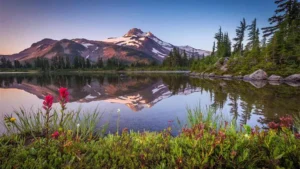
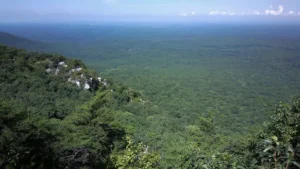

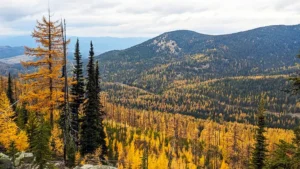
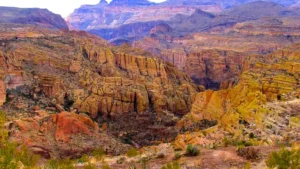
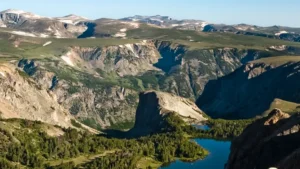
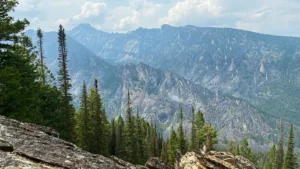
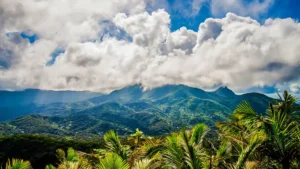
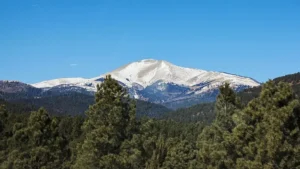
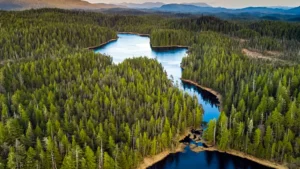

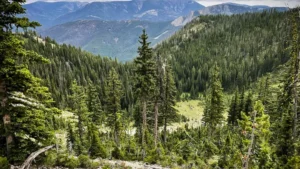
Leave your comment